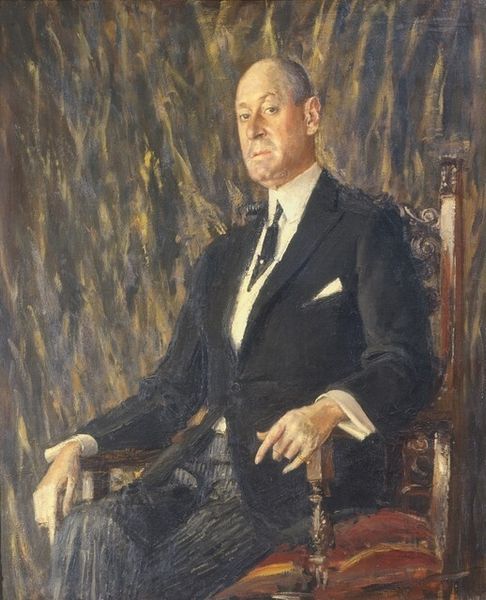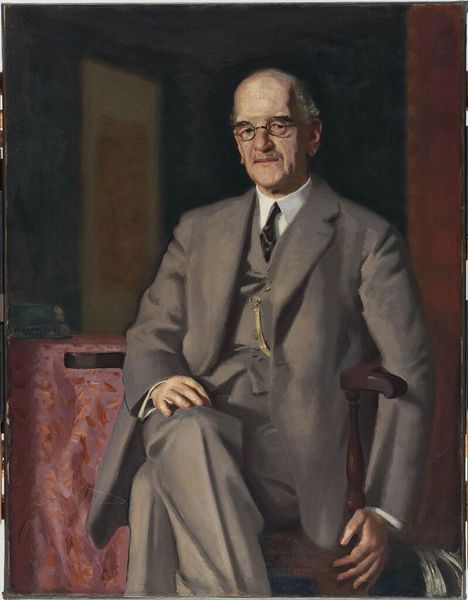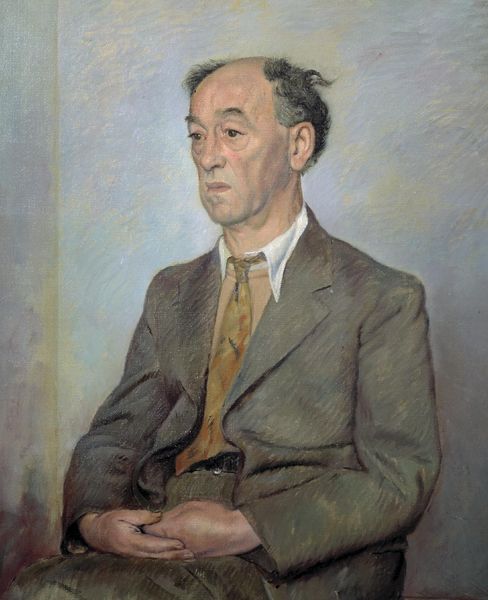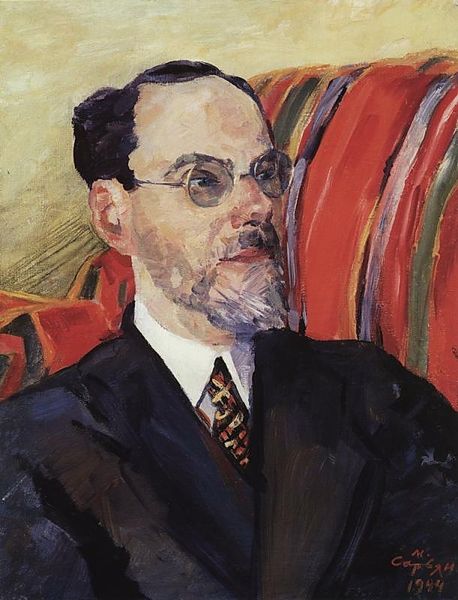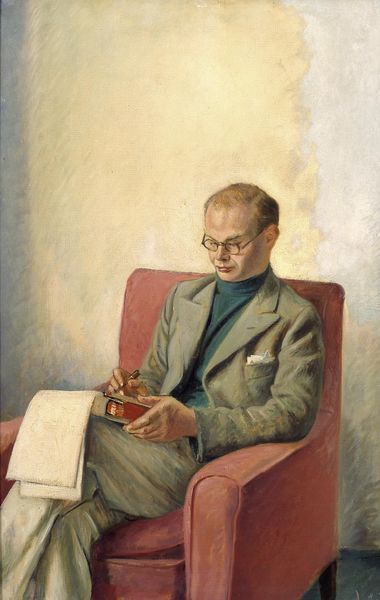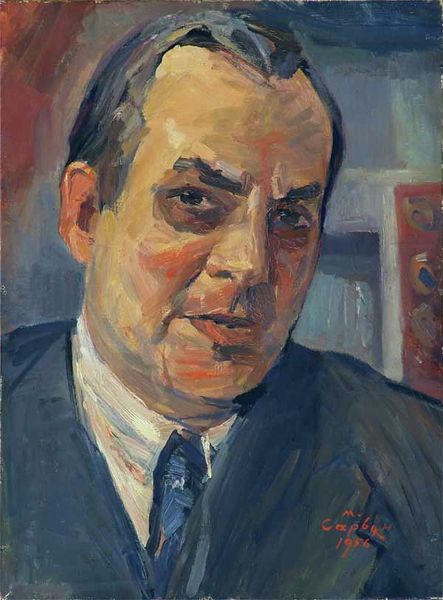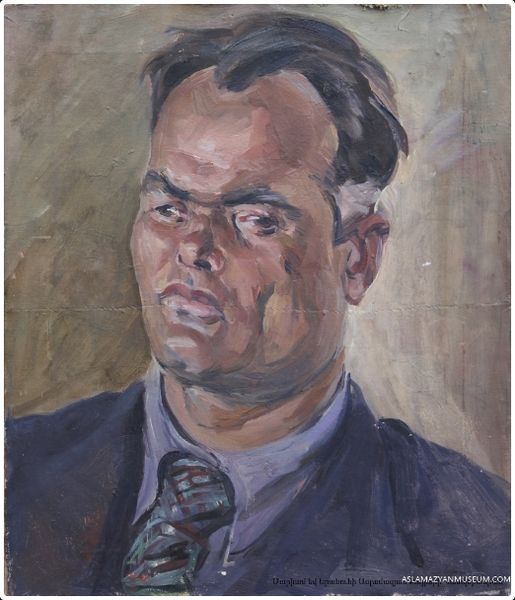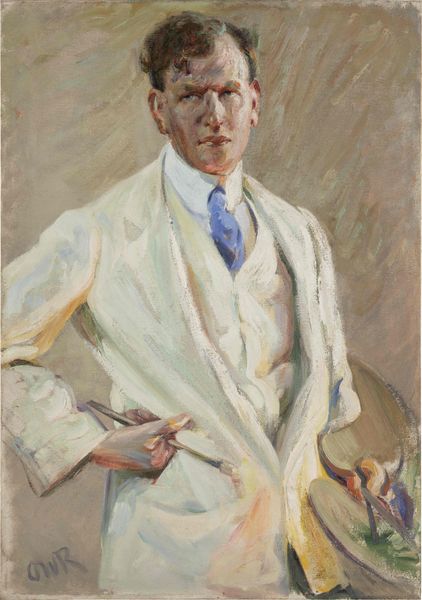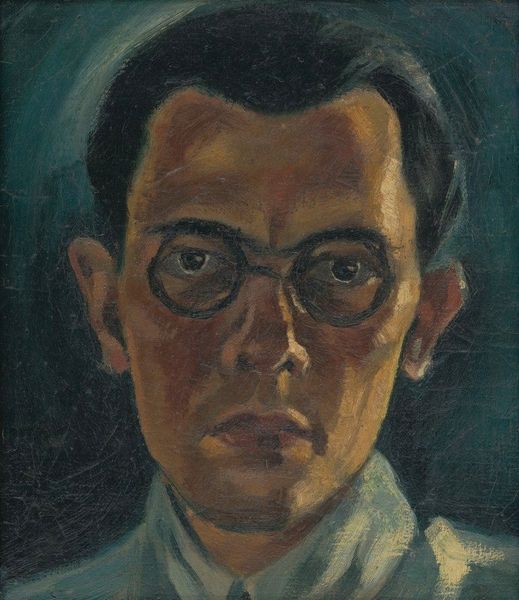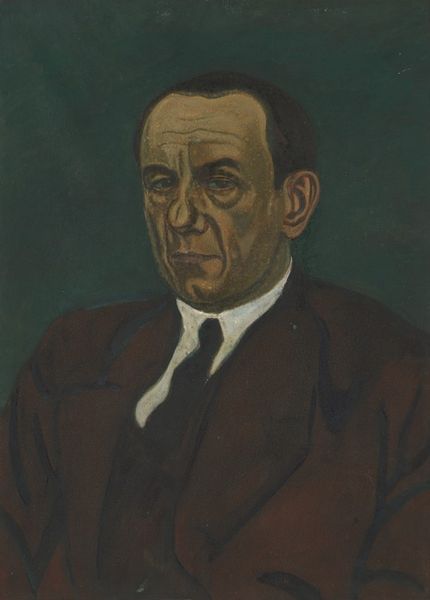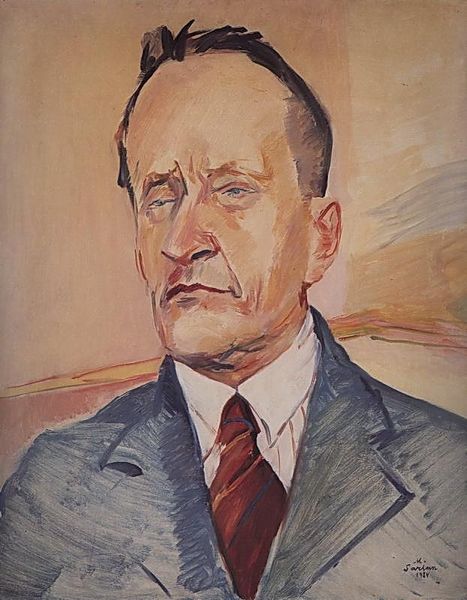
oil-paint
#
portrait
#
oil-paint
#
oil painting
#
abstraction
#
modernism
Copyright: Lasar Segall,Fair Use
Curator: Standing before us is "Retrato de Mario de Andrade," rendered in 1927 by Lasar Segall, primarily using oil paint. The work presents an intriguing intersection of portraiture and modernism. Editor: It does have an appealing muted palette. A restrained, intellectual aura seems to emanate from the subject, perhaps amplified by those striking geometric shapes in the background. It feels very considered, and maybe a touch melancholic? Curator: The historical and artistic context is quite rich. Segall, a Lithuanian-Brazilian painter, was deeply embedded in the modernist movement, particularly within the vibrant art scene of São Paulo. His engagement with themes of identity, displacement, and social realities resonates profoundly, aligning with the concerns of intellectuals like Mário de Andrade, who was a crucial figure in Brazilian modernism. Editor: Absolutely. It's fascinating to view this piece through a lens of intersectional narratives. How does Segall's own immigrant identity, coupled with de Andrade's role in shaping Brazilian cultural identity, play into this artistic representation? Curator: Segall’s use of abstraction in this portrait allows for an interesting dialogue. The fractured planes and simplified forms deconstruct conventional notions of representation, creating a space for deeper interrogation of identity, race, and cultural assimilation during a transformative period in Brazil. The work embodies some anxiety around national identity at a moment of incredible transformation in the built environment and cultural norms. Editor: I appreciate the artist's technique here. Segall doesn't offer easy answers. The subject is captured as thoughtful, intellectual, yet there's this sense of ambiguity. A push-and-pull that speaks to the complexities of identity in post-colonial Brazil. Curator: This painting encourages us to think critically about the socio-political forces that shaped the art world in the early 20th century. It makes a powerful statement about the ways in which art can reflect and shape collective and individual identity. Editor: A powerful reminder that even within portraiture, which often feels deeply personal, there’s an underlying conversation about the political landscape of visibility, representation, and power dynamics at play. Curator: Indeed, Segall has created a lasting document with multiple layers of insight. Editor: Yes, there's so much to unpack; a painting to which one could certainly return and develop new understandings each time.
Comments
No comments
Be the first to comment and join the conversation on the ultimate creative platform.
